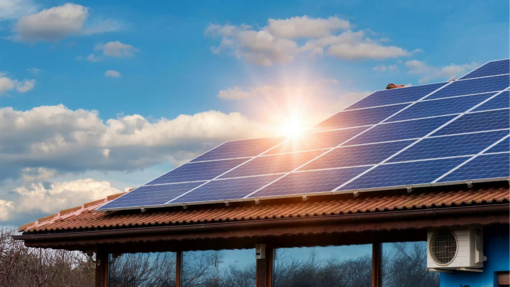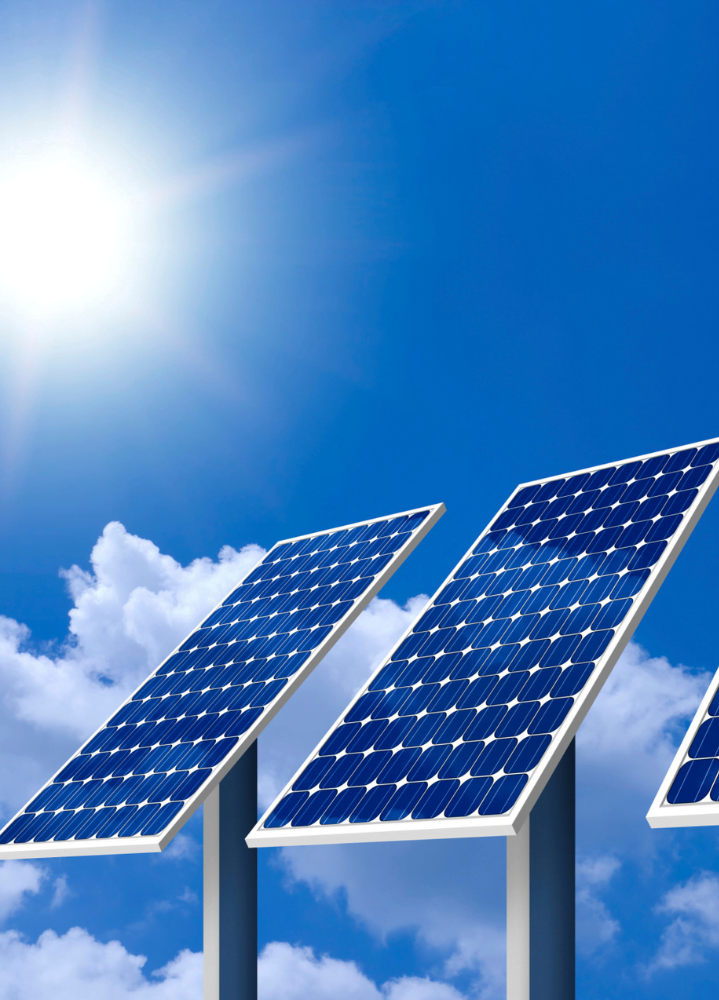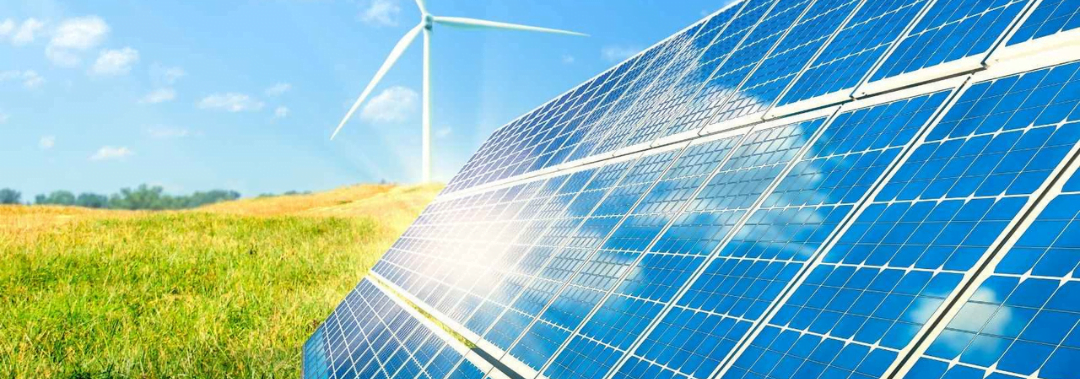Agriculture Hybrid Solar System
Grid-Connected Solar Photovoltaic System with Additional Battery Storage

In today’s farming landscape, rising energy costs are driving agricultural operations to explore sustainable alternatives. Agriculture Hybrid Solar Systems offer an ideal solution, combining the benefits of solar energy with the reliability of battery storage and grid connectivity. By becoming their own power producers, farmers can significantly reduce electricity expenses and ensure a stable power supply for critical operations.
While solar energy is abundant during daylight hours, its availability is limited. An Agriculture Hybrid Solar System solves this challenge by storing surplus energy generated during the day for use at night, potentially leading to significant reductions in electricity bills.
Although less common than traditional grid-tied solar systems without batteries, hybrid solar systems are more costly and complex to install. Utility companies may be slow to facilitate their widespread adoption in some areas.
A grid-tied solar system with batteries for agriculture uses both battery storage and the grid as backup power sources. When solar panels generate excess energy, it is first stored in the batteries, and any additional energy is sent to the grid once the batteries are fully charged.
In the event of a grid outage, the system automatically switches to off-grid mode, drawing on stored solar energy from the batteries. This feature is especially valuable for farms located in areas prone to power disruptions, ensuring critical operations like irrigation, refrigeration, and machinery continue without interruption.
A hybrid solar power system offers numerous advantages, including energy storage for nighttime use, resilience during power outages, and a safeguard against rising electricity costs.

Advantages of Agriculture Hybrid Solar Systems
By integrating solar panels with battery storage and grid connectivity, these systems provide a versatile and reliable source of power. They offer cost savings compared to fully off-grid systems while ensuring continuous power availability through the combination of battery backup and grid connection.
It comes at a lower cost than a fully off-grid system.
With both battery and grid serving as backups, it guarantees a more reliable power supply.
During a power outage, homeowners have the ability to utilize their own power supply.
Financial incentives for solar power are available.
Disadvantages of Agriculture Hybrid Solar Systems
One potential drawback is the initial cost, which can be higher compared to traditional grid-tied systems due to the additional components like batteries. Additionally, these systems require regular maintenance to ensure optimal performance and longevity, adding to the overall cost of ownership.
Difficulty with utilities may be experienced by homeowners during installation.
Utility fees may have to be paid for solar power.
Some financial incentives may not be applicable.
Grid power may still be required.
It is not easy to install like a one without a battery.Solar power and battery backups may not prove enough.

How Agriculture Hybrid Solar Systems Work?
An Agriculture Hybrid Solar System generates electricity through solar panels and stores excess energy in batteries while maintaining a connection to the grid. Here’s a step-by-step guide on how it works:
🔋 Solar PV Panels: Capture sunlight and convert it into direct current (DC) electricity.
🔄 Inverter: Converts DC electricity into alternating current (AC) to power your farm’s electrical systems, such as irrigation pumps, refrigeration, and farm machinery.
⚡ Battery Storage: Excess energy generated by the solar panels is stored in batteries, providing a reliable backup during nighttime or cloudy days.
📊 Grid Export: Once the batteries are fully charged, any surplus energy is sent back to the grid, earning you credits through net metering.
🔌 Grid Backup: Automatically pulls electricity from the grid when solar energy and battery storage are insufficient, ensuring uninterrupted power supply for your farm operations.
Applications of Hybrid Solar Solutions in Agricultural Sectors
🚜 Irrigation Systems
Hybrid solar systems provide reliable power for water pumps and irrigation systems, ensuring consistent water supply even during power outages.
❄️ Refrigeration and Storage
Hybrid systems power refrigeration units and storage facilities, keeping produce fresh and reducing the risk of spoilage during grid disruptions.
💡 Farm Equipment and Machinery
Hybrid solar systems can power essential farm equipment, ensuring your operations run smoothly and efficiently throughout the day.
🔋 Remote Farms
Farms located in remote or off-grid areas can greatly benefit from hybrid solar systems, ensuring continuous power availability while reducing fuel dependency.
Key Features of Agriculture Hybrid Solar Solutions
✅ Energy Independence
Hybrid systems provide independence from the grid by storing surplus energy for later use, reducing reliance on external power sources.
✅ Battery Backup
Ensures continuous power by storing excess solar energy, which can be used during nighttime or cloudy days.
✅ Hybrid Capabilities
Integrates solar, battery storage, and grid connectivity for maximum energy reliability and flexibility.
✅ Cost-Effective
Helps reduce electricity bills by allowing you to generate and store your own power.
✅ Sustainability
By using renewable solar energy, farms can significantly reduce their carbon footprint and promote eco-friendly farming practices.
Further Factors to Contemplate Regarding Solar Power Systems

The type of solar power system you choose for your home is undoubtedly a crucial decision, but in addition to that, there are other factors to consider, including:
Solar Power System Size: The size of the solar power system you opt to install in your home is contingent upon your energy needs, as well as whether you intend to incorporate battery storage or generate electricity independently. Factors such as your power consumption habits and the amount of sunlight available for generation will influence the ideal system size.
Solar Panel Placement: While solar panels are typically installed on the rooftops of homes, there are instances where ground-mounted posts may be utilized. This scenario arises when the roof is aged, has an unconventional slope, or lacks adequate sunlight exposure.
Fixed vs. Sun Tracking Arrays: Solar arrays come in two varieties: fixed and sun tracking. Fixed arrays are the more prevalent option, being both cost-effective and straightforward to design and install. On the other hand, sun tracking arrays are employed to maximize solar power generation. By dynamically adjusting the angle of solar panels, sun tracking arrays ensure optimal exposure to sunlight, thereby increasing energy yield.
Solar Panel Material: Solar panels come in various materials, including crystalline silicon, monocrystalline, polycrystalline, and thin film. Solar installers possess the expertise to recommend the most suitable material for your solar power needs.
Solar Power System Financing: While some homeowners can afford to purchase a solar power system outright, others may require financial assistance. Loans are readily available for this purpose. Another viable option is leasing, which allows homeowners to enjoy the savings and financial incentives of solar power without the burden of upfront costs.
